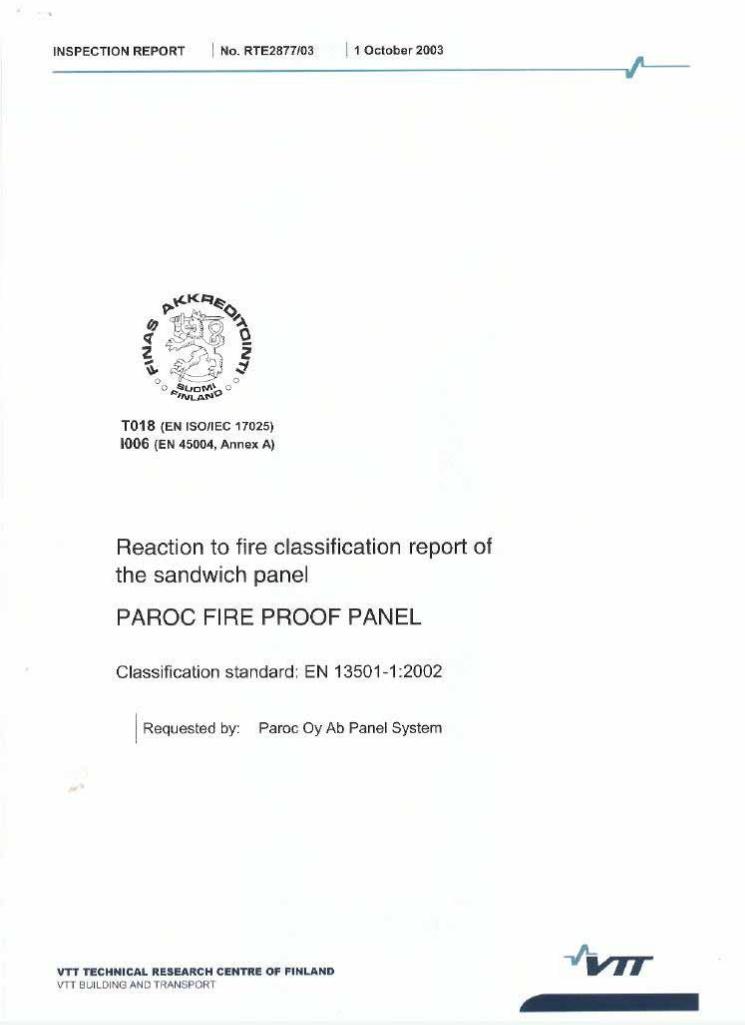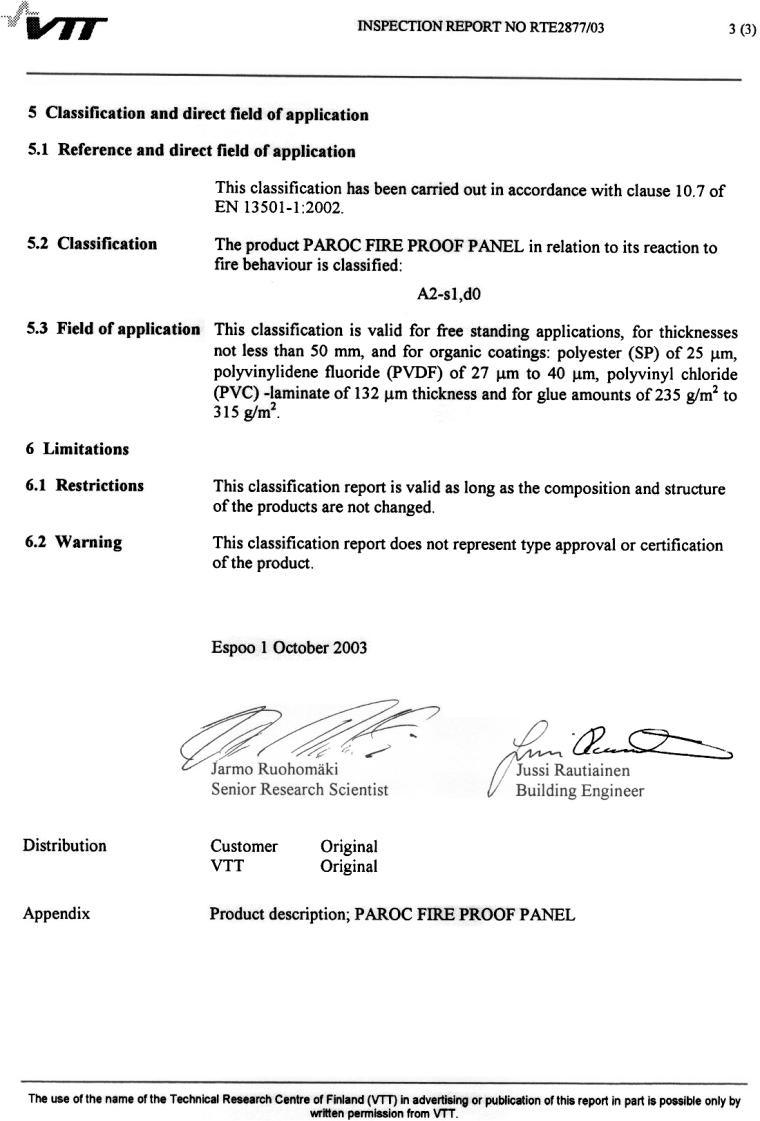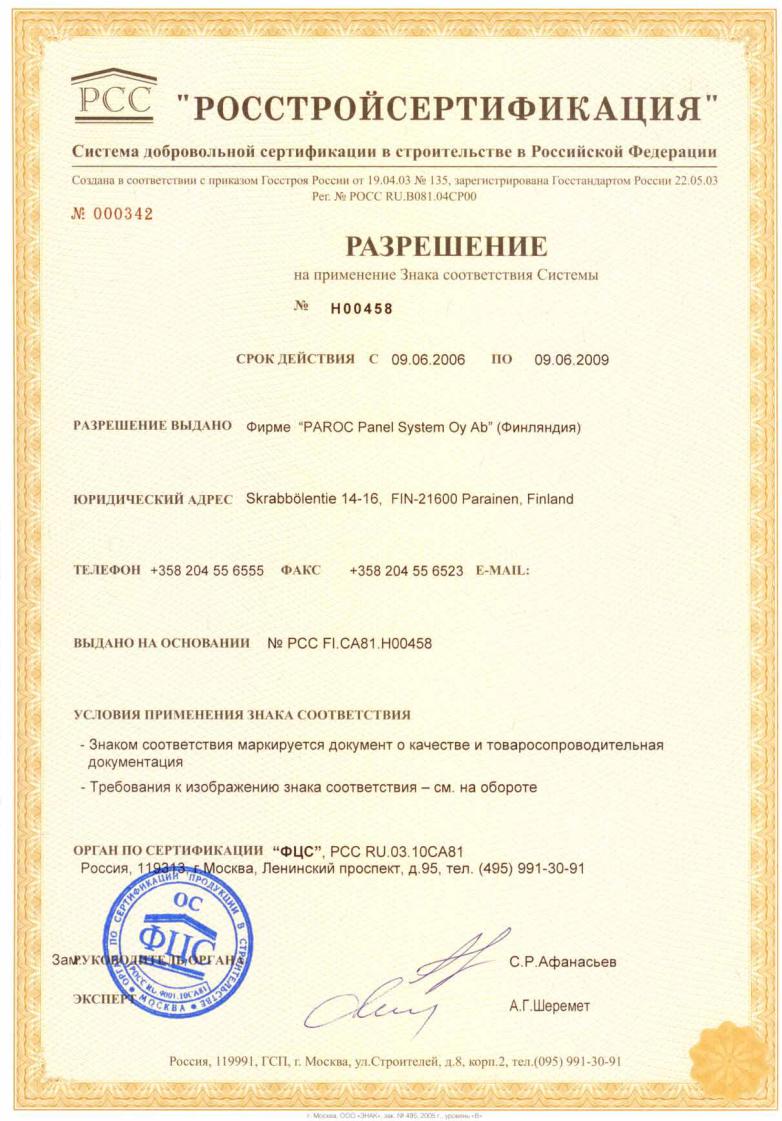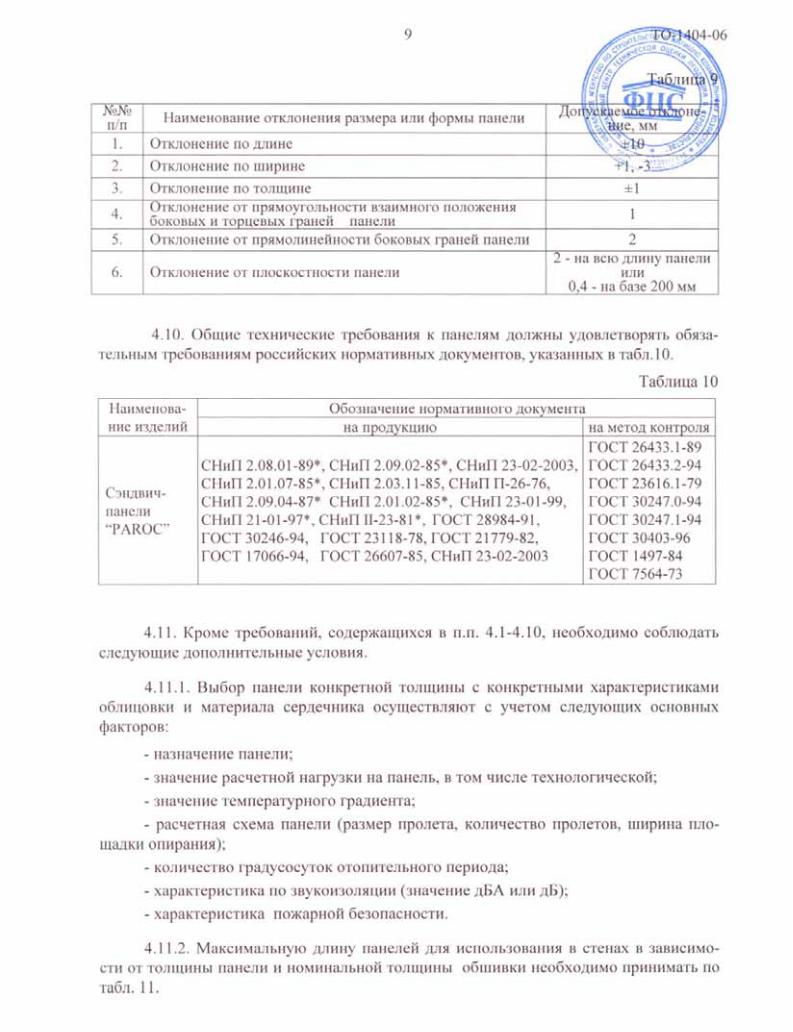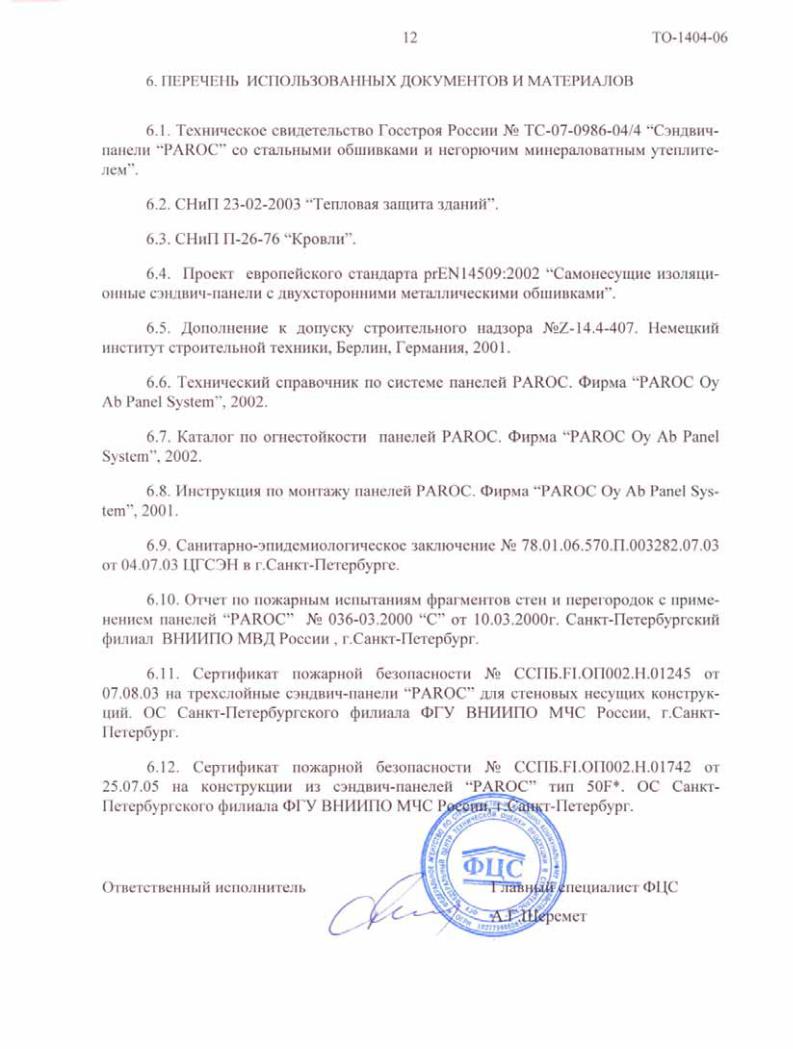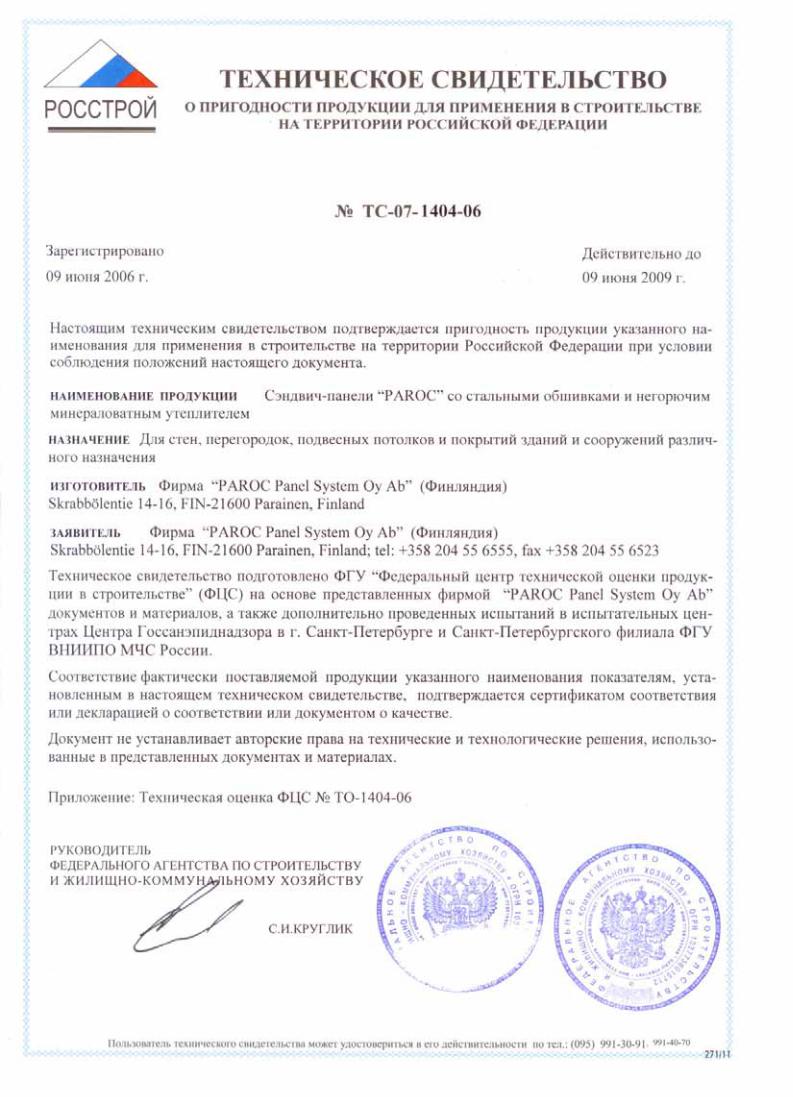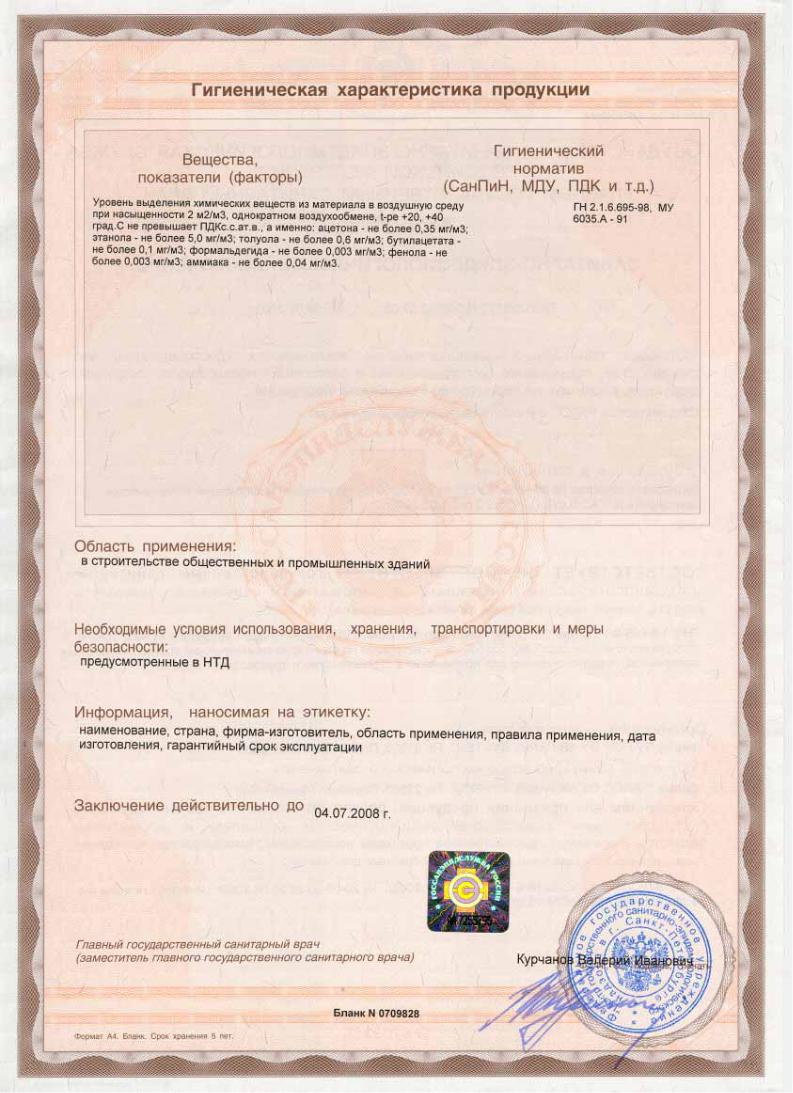

Vertical installation
Internal walls
1 First install the ceiling profile along one side of the wall to be installed. Check alignment and install the corresponding floor profile.
2 Install the panels with the male joint in the installation direction in accordance with the installation drawing. Install sealant if required.
3 Lift the panel into position against the floor profile and raise the panel upright against the ceiling profile. Panels shorter than 4 m are easy to raise manually.
Longer panels can be raised using a scissor lift or forklift.
In this case soft material must be applied against the panel so as not to damage the surface. Also remember to check the lifting capacity of the scissor lift.
4 Using a builder’s level, check that the |
|
6 Lift and raise the next panel. Use quick |
panel is vertical in all directions. |
|
grip and hand suction pads to press the |
|
|
panels against each other. |
|
|
|
|
|
|
5 Fix the panel with screws to the floor profile. If the structure is fire resisting, panels with lengths over 3.5 m must be fixed with a fire profile at the upper end of the panel.
7 At regular intervals check that the panels are vertical.
8 Use stone wool strip between the ceiling and the panels and also if gaps appear between the floor and the panels.
9 Install the opposite ceiling and floor profiles.
10 Connection details are to be executed as specified for the fire resistance and other requirements in question. See detail solutions.
NOTE!
The panels are to be handled carefully not to cause any damage to their finished surfaces.
In fire resisting walls, use steel rivets and flashing screws.
6

Installation of ceilings
1 Install the panels in accordance with the installation drawing.
2 Check that the sealant applied on-line is intact. Apply additional sealant if required, see installation drawing.
3 Lift the panel into position using e.g. a scissor lift. Use soft material against the panel surface to avoid surface scratches.
4 Measure the starting point for the first panel carefully.
5 Install the panel with top hat profiles. Fix the profiles to panels with screws.
6 Lift the next panel into position and check that the tongue-and-groove joint is tight. Use hand press and hand suction pads to press the panels together.
7 Remember to join the panels with a steel sheet on top.
8 Use stone wool strip in panel ends before installing flashings.
9 Apply sealing compound between flashings and panels to maintain the vapour barrier. Additional sealing compound is required where the flashing and panel joints intersect.
NOTE!
In ceilings, use steel rivets and flashing screws.
The panels are staticly dimensioned only for normal foot traffic during the panel installation. The dimensioned load is 90 kg (one man) and a service load
of 25 kg/m2 (tools).
Walkways have to be protected as follows:
•Heavy foot traffic, such as ascending spots, doorways and installation location: load-distributing boards
on top of 10-20 mm thick rigid mineral wool
•Other walkways and installation places: a 15 mm thick plywood board
•Permanent walkways: loads should be transferred to the bearing frame.
7

Flashings and maintenance
Flashings |
Cleaning |
Flashings play a decisive part in the installation. Often the entire installation work is judged on the basis of the flashings so the work has to be done with care. When required, the flashing strips are delivered to site well packed, with a packing list showing types and amount of strips.
Normally the flashings are delivered in running meters and cut to required lengths on site. The flashing joints are adapted to be on the same height as the panel joints.
If the flashings are installed overlapping, the overlap should be min. 100 mm with sealing compound between the overlap. The flashings are fixed to panels, not to each other, using steel sheet screws or pop rivets of steel or aluminium min.
ø 4.8 mm at 300 mm centres. In fire resisting structures, use only steel rivets and screws.
Dirty areas can be cleaned using water and a soft brush. For more difficult dirt, use a cleaning agent for paint, ammonia containing alcali detergent, which should be rinsed off with water after a few minutes time. Always rinse from above downwards. Areas with extremely difficult dirt can be cleaned using a cloth moistened with white spirit.
100 mm
Paroc® Fire Proof Panels are produced by Paroc Oy Ab, Panel System, a member of Paroc Group, Finland. Paroc®, Paroc Structural, JointSeal and FoodSafe are trademarks of Paroc Group. All rights reserved. Subject to changes without notice.
For further information, please contact Paroc Panel System’s project engineer.
Maintenance
We recommend that the building is inspected every second year in case of normal conditions and once a year if the building is located in an aggressive environment. The inspection should cover the following matters:
•Assembly of dirt in places where rain water does not rinse the surface
•Surfaces with poor ventilation therefore subjected to long wet periods
•Possible damage on the surface.
Repair of surface
Small scratches in the surface can be repaired with a make-up brush and the repair paint Repco (Tikkurila). Always start with a small area to check that the repair paint is of same colour and gloss as the panel coating.
More extensive damage requires that the repair work is performed by professional painters.
PAROC OY AB
Panel System
FIN-21600 Parainen, Finland Telephone +358 (0)20 455 6555 Fax +358 (0)20 455 6523 www.paroc.com
3008PPSEN0303 |
A M E M B E R O F PA R O C G R O U P |
|

Paroc Panel System
Instrukcii po montavu
8.00 RUS
Mart 2001
FIRE PROOF PANELS

Nastoq]ie instrukcii prednazna^eny dlq ispolxzowaniq panelej w standartnyh uslowiqh.
Ob]ee rukowodstwo
Paneli Paroc
Paneli Paroc predstawlq@t konstrukci@ tipa sandwich, w kotoroj serde^nik i oblicowka qwlq@tsq sostawnymi ^astqmi. Dlq obespe^eniq pro^nosti paneli izbegatx l@byh pererezow neogoworennyh dokumentalxno.
Paneli postawlq@tsq s okon^atelxno otdelannoj powerhnostx@, i po\tomu s nimi sleduet obra]atxsq s ostorovnostx@, ^toby izbevatx carapin i drugih powrevdenij wo wremq montava.
Esli paneli postawleny s za]itnoj plenkoj, to ona dolvna bytx snqta neposredstwenno posle montava.
Identifikaciq paneli
Identifikacionnyj kod kavdoj paneli nahoditxsq na werhnej powerhnosti paneli (1) na qrlyke, gde otme^eny:
1)Nomer paneli w sootwetstwii s raspoloveniem w montavnyh ^ertevah.
2)Tol]ina listowoj stali i pokrytie powerhnosti 1.
3)Tol]ina listowoj stali i pokrytie powerhnosti 2.
4)Tip serde^nika iz mineralxnoj waty.
5)Dlina paneli.
6)Nomer upakowki.
7)Raspolovenie paneli w upakowke.
Esli obe powerhnosti ime@t odinakowyj cwet no razli^noe pokrytie, to togda neobhodimo wsegda prowerqtx prawilxnostx montava paneli. Sleduet oznakomitxsq s montavnym ^ertevom.
Karkas
Pered montavom prowerqtx sootwetstwie karkasa ^ertevam i proizwesti razmetku osej.
Kreplenie
Proweritx tip fakti^eski postawlennogo krepleniq. Kreplenie ne dolvno zatqgiwatxsq sli[kom plotno, ^toby izbevatx wpadin wokrug nih. Ispolxzujte, naprimer, [urupowert s ograni^itelem zawora^iwaniq.
2
A/O «Parok»
Panel Sistem
Proekt û IP 8693
1Panelx û, Pos.1 PVM 280698
2 1) 0.6 PVF2
3 2) 0,5 PE
475C
5L = 05990
6 Upakowka û 028
702/10
Detali
Dlq obespe^eniq ka^estwa i funkcionalxnosti ob]ej konstrukcii neobhodimo strogo priderviwatxsq wseh podrobnostej i sootwetstwiq k detalizirowannym uzlam. Kreplenie, protiwopovarnaq i teplowaq izolqciq, nakladki i dr. dolvny t]atelxno ustanawliwatxsq w sootwetstwii so specifikaciej proekta.
Razrezanie i otwerstiq w panelqh
Otwerstiq i wyrezy mogut wypolnqtxsq po neobhodimosti i na meste montava. Obratite wnimanie, ^to bolx[ie otwerstiq mogut umenx[itx pro^nostx paneli. Stati^eskie ras^ety paneli wypolneny tolxko s u^etom teh otwerstij, kotorye otme^enny w montavnyh ^ertevah. Ispolxzujte novowku dlq wypolneniq nebolx[ih otwerstij i kriwolinejnyh razrezow. Bolee dlinnye razrezy mogut potrebowatx ispolxzowaniq diskowoj pily. Ne ispolxzujte uglowu@ [lifowalxnu@ ma[inu dlq razrezaniq panelej, tak kak pri wysokih temperaturah sgoraet za]itnoe pokritie. Udalite struvku s powerhnosti paneli, tak kak ostaw[iesq zagrqzneniq mogut obescwetitx powerhnostx i korrodiruq ee poportitx.
Wam ponadobqtsq:
•Drelx i [urupowert s patronom 8 mm (0-2000 ob./min., krutq]ij moment 1900 Nsm).
•Stolqrnaq novowka i/ili diskowaq pila s lezwiem iz twerdogo metalla, prednazna^ennym dlq obrabotki listowoj stali.
•Novnicy dlq rezki vesti, kle]i dlq sgibaniq vesti i zaklepo^nye kle]i.
•Montavnyj ^ertev i upakowo^nyj list panelej.
•Pod_emnye zahwaty , arenduemye u firmy Paroc Panel System, dolvny zakazywatxsq zablagowremenno.
•Niwelirowo^nye instrumenty, stroitelxnyj niwelir, otwes i izmeritelxnaq lenta.
•{pric dlq silikonnowogo uplotnitelq, prednazna^ennogo dlq [wow.
•|lektropitanie.
•Kran ili awtopogruz^ik (gruzopod_emnostx@ ok. 2 tonn) dlq razgruzki, pod_emnyj kran i pod_emnik novni^- nogo ili teleskopi^eskogo tipa dlq montavnyh rabot w zawisimosti ot metodiki pod_ema.
Predmontavnaq podgotowka
Pered tem, kak na^atx montav, prowerxte sledu@]ee:
•Nali^ie dostato^nogo mesta dlq hraneniq upakowok s panelqmi.
•Dostato^noe rabo^ee mesto wokrug karkasa.
•~ertev raspoloveniq upakowok s panelqmi.
•Gotownostx karkasa, [irinu opiraniq, i dopustimye otkloneniq.
•Neobhodimo sobl@datx drugie mestnye prawila bezopasnosti.

PODGOTOWKA
Raspolovenie upakowok s panelqmi
Osu]estwlqjte razgruzku upakowok po odnoj i raspolagajte ih na rownom osnowanii rqdom s mestom montava, ispolxzuq montavnye ^ertevi i upakowo^nye listy kak ssylki. Powernite paket tak, ^toby [puntowye soedineniq styka raspologalisx po naprawleni@ k stene zdaniq. Ne ukladywajte upakowki drug na druga.
Priemnaq prowerka
Prowerxte koli^estwo i gabarity panelej na ih sootwetstwie upakowo^nomu listu i montavnym ^ertevam. Takve nemedlenno prowerxte nali^ie wozmovnyh powrevdenij pri transportirowke i, w slu^ae powrevdenij, sdelajte nemedlenno zapisx na transportnoj nakladnoj i peredajte pisxmennyj raport postaw]iku panelej.
Naprawlenie montava
Esli po-drugomu ne soglasowano, to paneli upakowywa@tsq w sootwetstwii s naprawleniem montava, slewa naprawo. Pri wertikalxnom montave panelej, oby^no [puntowoe soedinenie obra]eno k naprawleni@ montava, kak \to pokazano na montavnom ^erteve. Po tehni^eskim pri^inam, swqzannym s pokrytiem, na listowom metalle mogut bytx nebolx[ie rashovdeniq w ottenkah sredi razli^nyh partij postawok. Esli dlq panelej ne dan opredelennyj porqdok montava, to paneli sleduet wozwoditx w tom porqdke, kak oni postawleny. Esli porqdok montava ogoworen, to on dolven sobl@datxsq.
Razgruzka
Esli pri razgruzke panelej ispolxzuetsq wilo^nyj awtopogruz^ik, to ustanawliwajte wilki wo wnutrx popere^nyh rasporok, gde raspolagaetsq usilenie upakowki. Pri razgruzke panelej s ispolxzowaniem krana neobhodimo zaranee zakazatx pod_emnye stropy. Pered pod_emom neobhodimo proweritx, ^to pod_emnye stropy w porqdke, i ^to upakowki s panelqmi sbalansirowany.
Wnimanie! Obratite wnimanie, ^to pod_emnye stropy dlq razgruzki qwlq@tsq razowogo polxzowaniq i dolvny ispolxzowatxsq tolxko raz.
Rabota s panelqmi
S panelqmi neobhodimo obra]atxsq ostorovno, tak kak oni ime@t otdelannu@ do gotownosti powerhnostx. Wsegda ispolxzujte listy iz dutogo poli\tilena mevdu panelqmi.
Pri swarke ili ispolxzowanii uglowoj [lifowalxnoj ma[iny powerhnostx paneli neobhodimo za]ititx. Zakrywajte otkrytye upakowki s panelqmi posle okon^aniq rabo^ego dnq.
Wes 1m paneli
Tol]ina paneli |
50 mm |
80 mm |
100 mm |
120 mm |
150 mm |
200 mm |
240 mm |
Tip serde^nika |
|
|
|
|
|
|
|
Paroc 50C |
18 |
21 |
23 |
24 |
28 |
33 |
38 |
Paroc 50F |
20 |
23 |
26 |
28 |
33 |
40 |
46 |
Paroc 75C |
–– |
24 |
27 |
29 |
34 |
41 |
46 |
|
|
|
|
|
|
|
|
3

Gorizontalxnyj montav
Naruvnye i wnutrennie steny
1.Paneli dolvny ustanawliwatxsq strogo gorizontalxno. Proweritx urowenx cokolq, ^toby opredelitx naibolee wysoku@ to^ku. Otmetitx wysotu na naruvnoj storone karkasa i ispolxzowatx \ti otmetki wysoty pri montave panelej.
2.Ustanowitx uplotnitelx cokolq i ustanowite U - obraznyj profilx na cokolx na rasstoqnii 8 mm ot karkasa. Prikrepitx U - obraznyj profilx ^erez promevutki w 600 mm.
3. Ustanowitx cokolxnu@ vestx s nahlestkoj razmerom 100 mm, ispolxzuq w nahlestke uplotnitelx.
4. Zapolnitx U - obraznyj profilx polosoj iz mineralxnoj waty po wozmovnosti pri montave paneli.
5. W naruvnyh stenah ispolxzujte uplotnitelx (lentu ili mastiku) na karkase tak, ^toby krepev paneli ostawalsq za predelami uplotnitelq.
6. Podnqtx panelx w sootwetstwennoe polovenie, ispolxzuq pod_emnoe ustrojstwo. Naprawlqjte panelx s pomo]x@ strahowo^nogo kanata, prikreplennogo k odnomu koncu paneli. Takve ne zabudxte prikrepitx za]itnyj strop k paneli.
7. Panelx, prednazna^ennaq dlq ispolxzowaniq w naruvnyh stenah, postawlqetsq s uve ustanowlennym na zawode uplotnitelem. Prowerxte, ^to \tot uplotnitelx ne razru[en, ^toby garantirowatx horo[u@ paroza]itu. Soedinenie s uplotnitelem dolvno bytx powernuto w storonu teploj storony zdaniq, oby^no wo wnutrx. Pri \kstremalxnyh klimati^eskih uslowiqh uplotnitelx dolven nanositxsq takve i wo wne[nij paz soedineniq.
8. Privatx panelx plotno k karkasu, ispolxzuq bystrodejstwu@]ij zavim. Uplotnitelx na karkase dolven bytx svat po krajnej mere na 30%.
9.Prikrepitx panelx, ispolxzuq sootwetstwennyj krepev na rasstoqnii minimalxno 20 mm ot wertikalxnyh kraew paneli. Winty ne dolvny ^rezmerno zatqgiwatxsq; ispolxzujte [urupowert ili drelx s ograni^itelem zawora^iwaniq. Proweritx, ^to sohranqetsq neobhodimaq opornaq [irina dlq paneli.
10.Primenqjte mineralxnu@ watu w wertikalxnyh stykah dlq teplowoj germetizacii pered ustanowkoj oblicowo^nyh profilej.
11.S wnutrennej storony dlq germetizacii otwerstij i obespe^eniq paroza]ity primenqjte silikonowye uplotniteli.
ZAME~ANIE!
Oznakomxtesx s instrukciej po ispolxzowani@ pod_emnogo oborudowaniq. Ne proizwoditx montav pri silxnom wetre.
Pri sooruvenii ogneupornyh sten i peregorodok ispolxzujte tolxko stalxnoj krepev.
4

Panel System
9.00 INT
January 2002
Paroc Panel System
Use and Maintenance Guide
Cleaning of
panels
Panels in use
Painting and repair of panels
Paroc Panel System has drawn up four guides for the use and maintenance of Paroc Panels.
Maintenance of the panels in line with the guides will ensure the functioning and a longer service life of the panels.
The guides can be ordered from Panel System, see address on the back of this folder.
Exchanging
panels

Life cycle of Paroc Panels
Air pollution and corrosion
Near to industrial plants, major cities and coastlines impurities and air pollution accumulate on external walls in the form of sulphur dioxide, nitrogen oxides, chlorine gases, soot and other types of dirt. Air pollution together with air humidity generate acids, e.g. sulphur, nitrogen and hydrochloric acid, which have an adverse effect on coatings.
The corrosive effect of salts in the air is mainly based on their moisturebinding capability. When forming layers on wall surfaces, salts often bind water and thus build up the moisture content in the surface. At the same time they extend the wet-time of the surface, which to a great extent determines the corrosive impact of the climate. Without water practically no corrosion takes place.
In the Nordic countries rainwater and snow keep wall surfaces clean from dirt and pollution. However, cleaning at regular intervals ensures longer lifetime for the panels. Especially wall areas protected by eaves are in need of cleaning. In coastal areas special stress is caused by salt from the sea accumulating on the wall surfaces.
Regular service to ensure longer lifetime
Facings
In the course of years-surface appearances change due to dirt, loss of gloss or alterations in colour tones. The highest impact on these changes comes from air impurities, sun UV and heat radiation and outdoor temperature. Dark surfaces are subject to the highest stress. On walls facing south the surface temperature may with dark paint surfaces rise up to +80°C, with light colours up to +55°C.
The service life of an intact original paint coating is 25-40 years on an average depending on coating type,
building method and climatic conditions.
Due to higher thermal load the service life for dark colours is somewhat shorter than for light colours. When the protecting capability of a paint coating ceases to have effect, the panel is still protected by the zinc coating.
It is recommended that PVDF (PVF2) coatings are repainted for maintenance purpose after 20-30 years and polyester coatings after 15-20 years. This will restore the paint surface to almost the same level as when new and it can be repainted again after 10-25 years, which will give it a service life of over 50 years.
Scratches and dents
Scratches and dents left unrepaired have an adverse effect on the service life of the product and should therefore always be repaired. If the repair is made immediately, the damaged area often is only a scratch of some millimetre width, which makes the repair quick and easy. After some years it may be considerably more difficult to fix the same damage. It may also be difficult to make the damage unnoticeable as the colour of the patch-paint does not necessarily completely match the old coating.
Strength according to the AST standard
External wall structures have to maintain their strength, thermal insulation capacity and watertightness during their expected lifetime. For industrial buildings a lifetime of 25
Focusing on product life cycle
The objective of Paroc Group is to be a pioneer in environmental issues in the construction sector. Our business operations can be characterised as environmentally holistic: we follow our products throughout their life
years may be sufficient, whereas in many cases the demand can be up to 50 years. Paroc Panels are manufactured in accordance with the AST standard (Advanced Structural
cycle and we also take into consideration the positive energy savings and environmental impact of our products during their use.
The energy balance of Paroc Panels is positive: The energy consumed for
Technology). This means that Paroc Panels are tested in accordance with the European Recommendations for Sandwich Panels and they meet the requirements of the highest level.
manufacturing and installation of the panel is much less than the energy saving that can be obtained through the use of the panel throughout a building’s lifetime.
PAROC OY AB Panel System, FIN-21600 Parainen, Tel. +358 20 455 6555, Fax +358 20 455 6523, www.paroc.com
3005PPSEN0102

Panel System
9.10 INT
January 2002
Colour coated steel sheets
Paroc Panel System
Use and Maintemance Guide
Cleaning of panels
Dirty or stained areas can be washed with a soft brush and water. Water pressure cleaning (max 50 bar) can also be used, but then the water-spray must not be applied too close or perpendicularly towards the coating. At panel joints the water-spray should be directed at a downwards angle to avoid spraying pressurised water
directly into the joints. Old coatings should be handled with special care.
Difficult stains can be removed using the detergents shown in the table below. The pH value of the detergent should be between 5 – 10. Always wash the surfaces from below upwards and carefully rinse off the detergent with water after a few minutes, working from the top to the
bottom. Finally, the rainwater systems should be rinsed with water.
If detergents suitable for painted coatings are not available, car shampoos and a car-washing brush can be used. However, car shampoo is not recommended if the panel surface is to be painted. The shampoos often contain wax, which may weaken the adhesion of the new paint.
Detergents suitable for colour coated steel sheets
Detergent |
Application |
Manufactured by |
|
|
|
Peltipesu™ |
Difficult dirt |
Teknos Winter |
Panssaripesu™ |
Difficult dirt |
Tikkurila |
Lakkabensiini™ |
Very difficult, local dirt |
|
|
|
|
FoodSafe laminate
FoodSafe laminate can be washed daily with a soft brush. Water pressure cleaning (max 50 bar) can also be used. The pH value of detergents used for the washing of FoodSafe laminates should be
between 5 – 8. The detergent must not contain solvents.
The maximum washing temperature is +60 °C and the allowed continuous moisture < 80 % RH. The FoodSafe laminate is allowed to be wet for 6 hours/day.
After this the surface must be allowed to dry properly. For the drying, a soft cloth or air-blowing can be used. Special attention must be paid to drying panel joints and flashing edges.
PAROC OY AB Panel System, FIN-21600 Parainen, Tel. +358 20 455 6555, Fax +358 20 455 6523, www.paroc.com
3005PPSEN0102

Stainless steel
Stains and discoloured areas on stainless steel surfaces are cleaned as specified in the table below.
|
Cleaning methods for stainless steel |
|
|
Type of stain |
Cleaning agent and method |
|
|
Fingerprints |
Wash with white spirit, thinner, trichloroethylene or acetone, then rinse with cold water and dry. |
|
|
Oil and grease |
Wash with organic solvent as above, then with water and soap, rinse with clean cold water and dry. |
|
|
Difficult stains and |
Wash with mild abrasive cleaning powder in the direction of possibly visible surface structure, then rinse with |
discoloured areas |
clean cold water and dry, or |
|
wash with 10 % phosphoric acid solution, rinse with diluted cold water and dry. |
|
|
Heating colour and |
Wash with cleaning powder as above, or |
difficult stains |
grind with abrasive pad in direction of possibly visible surface structure, rinse with cold water and dry. |
|
|
Rust stains |
Soak surface with oxalic acid solution, give it 15 - 20 minutes to act, then rinse with clean cold water and dry. If |
|
required, repeat the procedure using cleaning powder as above. |
|
|
Paint stains |
Wash with paint solvent using a soft nylon brush, then rinse with clean cold water and dry. |
|
|
Scratches in |
Polish in the direction of the structure using an iron-free grinding agent and abrasive pad, then wash with soap |
ground or brushed |
solution, rinse with clean cold water and dry. Note! This method must not be used on 2B surfaces. |
surface |
|
|
|
Washing graffiti off PVDF surface
For the washing of graffiti, use detergent W-GRA. In addition you need protecting gloves, cloth and water.
W-GRA is applied using a cloth or by spraying on the dry graffiti. Give the agent 0.5 – 5 minutes time to act, depending on the temperature. A high temperature accelerates and correspondingly a low temperature slows down the effect of the detergent.
The working temperature should be |
Additional information |
above 0 °C. Try the effect by wiping |
Tampere Pesuainepalvelu (detergent |
with a cloth. A too long acting time |
information service) |
may be harmful for the PVDF |
tel. +358 42 466 221. |
coating. |
|
Wipe off the detergent and graffiti |
|
with a dry cloth and rinse the surface |
|
carefully with water or clean it with a |
|
damp cloth and dry it to remove the |
|
remaining paint. |
|

Panel System
9.20 INT
January 2002
Suspensions
Loads can be suspended in Paroc Panels using fixing screws. If the suspensions cause dynamic loads, penetrating screws shall be used. The suspension loads have to be taken into
Paroc Panel System
Use and Maintenance Guide
Panels in use
account when fixing the panels, |
types of suspensions. We recommend |
adding 1 fixing screw per 1 kN of |
that fixing screws of type Bulb-Tite |
load. |
rivets (Stadler) be used. |
The table below shows the number |
|
of fixing screws required for different |
|
Number of fixing screws per 20 kg
H (mm) |
|
Distance of load from panel surface L (mm) |
|
||||
|
|
|
|
|
|
|
|
200 |
|
300 |
400 |
500 |
|
600 |
|
|
|
|
|||||
|
|
|
|
|
|
|
|
100 |
2 |
|
3 |
4 |
4 |
|
5 |
|
|
|
|
|
|
|
|
200 |
1 |
|
2 |
2 |
2 |
|
3 |
|
|
|
|
|
|
|
|
300 |
1 |
|
1 |
2 |
2 |
|
2 |
|
|
|
|
|
|
|
|
400 |
1 |
|
1 |
1 |
1 |
|
2 |
|
|
|
|
|
|
|
|
500 |
1 |
|
1 |
1 |
1 |
|
1 |
|
|
|
|
|
|
|
|
600 |
1 |
|
1 |
1 |
1 |
|
1 |
|
|
|
|
|
|
|
|
With increasing loads, the number of required fixing screws increases linearly, e.g.
Load = 40 kg, the number of fixing screws is 2 x the number given in the table above.
Load = 60 kg, the number of fixing screws is 3 x the number given in the table above.
Note! In the shaded area of the table, always use 2 fixing screws at the top end of the load-bearing unit.
PAROC OY AB Panel System, FIN-21600 Parainen, Tel. +358 20 455 6555, Fax +358 20 455 6523, www.paroc.com
3005PPSEN0102
